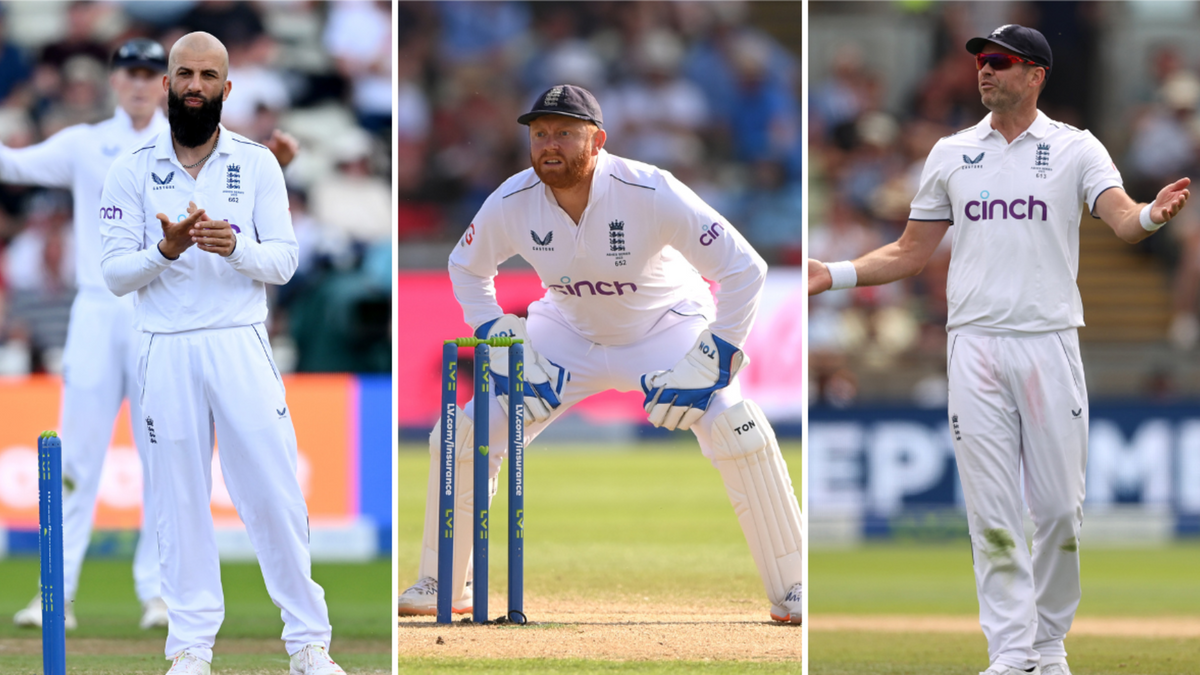
After they lost the first Ashes 2023 Test match at Edgbaston, England have plenty to ponder before
Despite coming so close to taking the wickets they needed on that final day, the loss precipitated criticism from several directions.
With less than a week until the thrilling contest resumes, here are the biggest questions facing England as they seek to level the series in London.
How far can England push Moeen Ali’s blistered finger?
Despite Joe Root’s commendable effort to solve England’s spin woes, it’s hard to think if Moeen’s shredded finger doesn’t heal in time for Lord’s England would feel comfortable going into the Test with him as their only option for spin. However, the lack of depth Moeen’s selection highlighted in the first place adds a further dimension to the issue. Rehan Ahmed and Will Jacks are their next two cabs off the rank by recency of selection, while Liam Dawson would probably be the more sensible choice. But, with Nathan Lyon’s exceptional performance at Edgbaston highlighting how much quality of spin separates the two sides, being down to a third-choice spinner by the second Test only widens that gap further.
The best-case scenario for England is that the week-long break between Tests is enough for that blister to heal. Whether they can risk re-opening it again and having to rely on Root adds another factor to the equation.
Does Anderson’s poor performance justify not playing him at his happiest hunting ground?
James Anderson’s uncharacteristically poor start to the series unquestionably hampered England at Edgbaston. While Ben Stokes’s decision to give Ollie Robinson the new ball as they desperately hunted wickets in the dying phase of the match drew criticism in some quarters, based on Anderson’s record in the match that call was the right one. Anderson has always been the one-word response to dampen Australian hopes of finding big scores in England. He floats in the background as a bogey-man poised to stop their batters from finding success in English conditions, no matter what form they come into it on.
But while disappointing, his two decades of Test match cricket means England will be fairly unconcerned that Anderson will turn it on at some point in the series. Moreover, giving him one Test after a return from injury lay-off before rotating him out of the sides may prove costly in the long run. Anderson was short on rhythm at Edgbaston, nothing more. Equally, Anderson’s name appears seven times on the honours board at Lord’s, and he has over 100 wickets there. Leaving him out would be a big call.
Is it finally time for Mark Wood to add some fire to the attack?
England missed searing pace at Edgbaston. When their starting XI was named before the Test, Mark Wood’s name was the most obvious omission. By the time Robinson came on to bowl bouncers on day two, their attack looked ill-equipped to deliver the short-ball plan they had clearly earmarked to Australia’s middle and lower order. It clearly cannot fall on Robinson to deliver that plan again. His success for England has been built on metronomic consistency in hitting line and length, not bowling in the low 80s at shoulder height.
Whatever bowling attack England pick, if that remains their plan they must be able to execute it. Stokes looks like an emergency option to chug through the pain when his side are desperate. It makes sense that Wood has to come into the XI.
Will Bairstow’s blunders necessitate a Foakes recall?
The first Test could have been a completely different result had England taken all the chances Australia had given them. While not the sole perpetrator, Jonny Bairstow missed four of those chances throughout the match. Aside from denting England’s hopes of a win, he poured more fuel on the Ben Foakes fire. It’s important to clarify that this is not a shootout between Bairstow and Foakes for a place. The question is whether Bairstow keeps the gloves or stays in the side as a batter while another makes way for Foakes. Bairstow’s record with the bat after keeping in a match is poor, in the fourth innings it’s even worse – he averages 18.16 in the fourth innings playing as a keeper. When playing as a batter only, that fourth innings average is 52.72. It’s a continuation of the question that has followed Bairstow for all of his career – how to get the best out of him.
The other question this raises is who would make way for Foakes. Zak Crawley, the man most in danger of losing his spot ahead of the summer, had a decent Test at Edgbaston, while Ollie Pope, Ben Duckett and Harry Brook all had outstanding winters. There’s no easy answer. England are highly unlikely to recall Foakes for Lord’s, but another error-strewn performance behind the stumps for Bairstow might force their hand for the second half of the series.
Is smart-Bazball a thing?
Ultimately, as it will ever be when it doesn’t come off, England’s approach is under the microscope. Australia employed the best of both worlds by blunting England’s aggression before emulating it at the end, making England look like their tactics lacked the smarts and flexibility to genuinely keep up with Australia.
The answer to this question is an obvious one. Of course they will back their dynamism to the bitter end. However, going one down with four to play is not irreversible. Going two down with three to go would effectively end their hopes of regaining the urn. If they fail to come off again, the backlash over how far their brand is to blame will be mighty.








